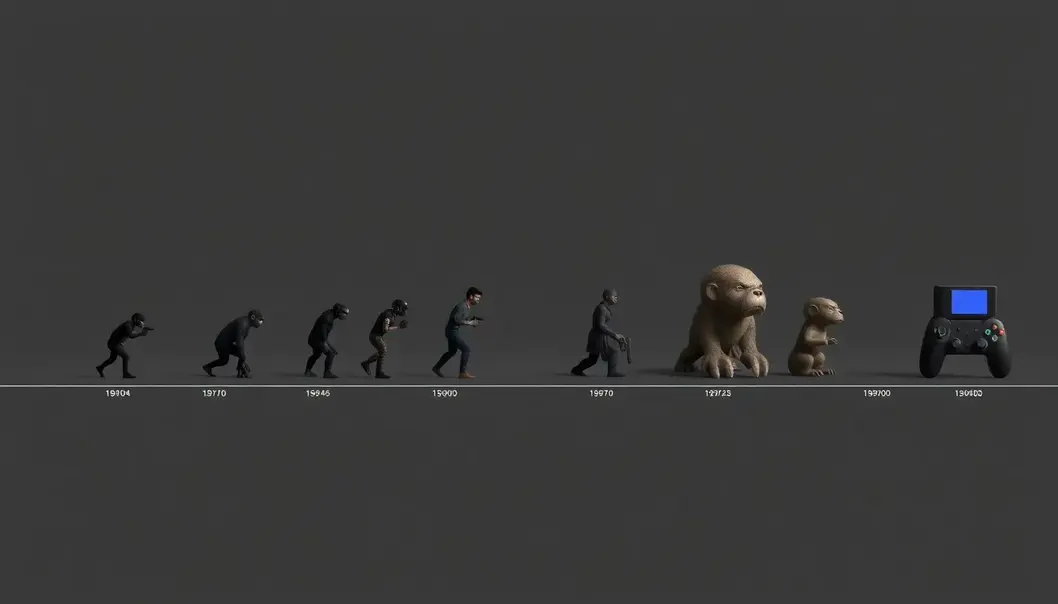Video games have traversed an incredible journey from simple pixelated graphics to immersive virtual realities. Their evolution mirrors technological advances and shifts in societal behavior. From the humble beginnings of ‘Pong’ to today’s expansive open-world games, this progression deeply influences not only entertainment but also education and social interaction. Each era brings unique features that enhance player engagement and expand audiences. As busy professionals, understanding these milestones can offer insights into broader technological trends and future innovations. This article aims to provide a concise yet comprehensive overview of video games’ role in shaping modern culture and technology.
From Pixels to 3D: Technological Milestones

The journey from pixelated images to immersive 3D environments marks one of the most significant transformations in the gaming industry. The early days of video games were defined by simple shapes and limited color palettes, where creativity was key in delivering engaging gaming experiences. As technological capabilities expanded, these rudimentary graphics evolved into detailed, lifelike renditions that now captivate players worldwide.
Pixelated graphics were the first stepping stone. Constraints of early hardware made developers masters of art within limited pixels, often using vibrant colors and clever design to suggest complexity and depth. As processing power grew, so did the ability to render more detailed sprites and backgrounds. This transition laid the groundwork for the next leap: the introduction of 3D graphics.
The advent of 3D technology in gaming introduced a new era where players could navigate fully realized worlds. This leap was powered by innovations in graphics processing units (GPUs), which enabled developers to create environments with depth and realism previously unattainable. Real-time rendering of 3D models opened a gateway to more dynamic gameplay and richer storytelling. Developers could craft expansive open worlds, each with its own set of physics and laws, inviting players to explore and interact within these digital realms.
A crucial development in this era was the introduction of texture mapping, which allowed 3D models to display complex surfaces and details, further enhancing the visual fidelity of games. This technological milestone laid the foundation for the richly detailed textures that are a hallmark of modern gaming. Additional innovations in lighting and shadow rendering also played a significant role, enhancing the atmosphere and emotional impact of games.
Another seismic shift occurred with the development of virtual reality (VR). VR combined the progress in 3D rendering with motion tracking to create experiences that placed players directly into the game world. This leap required technological innovation not just in software, but also in hardware, with the creation of head-mounted displays and responsive controls that track players’ movements in real-time. The fusion of these technologies has led to experiences that blur the lines between reality and the digital world.
Despite the marvels of 3D and VR, the industry continues to evolve. Emerging technologies like ray tracing are pushing the boundaries further, offering unprecedented realism by simulating the way light interacts in a real-world setting. These advancements promise to deepen immersion, making future games even more lifelike.
This technological trajectory not only enhances entertainment but also sets the stage for the next chapter in our discussion, where we explore video games’ broader impacts, from education to cultural shifts. As games continue to evolve, they challenge us to rethink their place and potential beyond mere entertainment.
The Impact of Video Games on Society

Video games have taken on roles that extend far beyond mere entertainment, penetrating the realms of education, social interaction, and cultural development. Once confined to arcade machines, gaming has evolved into a versatile medium that influences various aspects of daily life, altering the way individuals learn, communicate, and express cultural narratives.
Educational use of video games has increased significantly, providing innovative methods for engaging students. Games designed with educational purposes can make complex topics more accessible and enjoyable, offering interactive experiences that traditional methods lack. Through gamification, concepts in mathematics, science, and history become more engaging, leading to improved retention rates and deeper understanding. This approach not only makes learning enjoyable but also prepares students for digital environments prevalent in the professional field.
In terms of social interaction, video games have built substantial communities that transcend geographical boundaries. Massively multiplayer online games and social platforms foster collaboration, teamwork, and communication among players. These virtual spaces have become crucial during times when physical interaction is limited, enabling people to maintain connections and support systems. Gaming communities can be inclusive and diverse, encouraging individuals from various backgrounds to interact and collaborate.
Culturally, video games have become a powerful force in shaping societal narratives. They offer immersive storytelling experiences that can reflect and critique real-world issues, providing players with perspectives on societal, political, and economic themes. As a result, games act as cultural artifacts, offering insights into contemporary values and concerns. Through the inventive combination of visuals, narratives, and interactivity, games convey complex subjects in compelling ways, influencing how people perceive culture.
Moreover, video games serve as a creative outlet, allowing users to engage with content actively rather than passively consuming it. This interactivity inspires creativity and critical thinking, empowering players to create, modify, and share content. The rise of game modding and user-generated content illustrates how players can shape and redefine gaming experiences, contributing to an ever-evolving digital culture.
In summary, video games have transformed significantly, affecting education, social interaction, and cultural dynamics in profound ways. They continue to develop as tools for more than just play, reinforcing their role in shaping modern society.
Final words
The journey of video games from basic forms to complex ecosystems underscores their influence on technology and culture. These digital creations not only entertain but also educate and connect people globally. For busy professionals, understanding this evolution provides a window into technological trends that often ripple across industries. As the gaming landscape continues to advance, its role as a cultural cornerstone further solidifies.
Dive deeper into the latest gaming innovations by exploring our extensive collection of resources and insights!
Learn more: https://www.gaminginsights.com/explore
About us
Gaming Insights offers comprehensive analyses and resources on the latest trends and technologies in the video game industry, providing valuable insights for professionals looking to leverage these trends in their respective fields.
